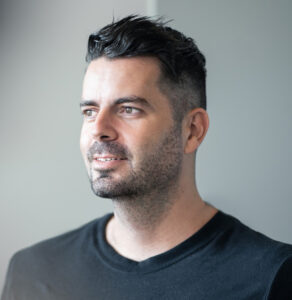
Article
Tough Design Decisions? Start by Calling Buzzword ‘BS’
Great design is too important to business success to be demoted due to misrepresentation, misuse and poor execution. Learn what to look for in great design.
Because of the acknowledgement that great design is integral to business success, we now live in a climate where design is on the tips of tongues everywhere. Everyone wants to be seen as the creative with the skills and aptitude to unlock company growth. The problem is that with this drive in design popularity comes a mire of design jargon, a dilution in the quality of skilled designers, and the rise of even more egotistical consultants.
Design buzzwords appear to be misrepresented and misused more and more frequently by people who don’t fully understand their meaning, their history, and, more importantly, how to execute upon them. Likewise, the skilled designer profession is being compromised by the mere acceptance that anyone who has completed a two-day crash course in design studies is a “design thinking evangelist,” a “human-centered design activist,” or a self-proclaimed “deep empathizer!”
So with these trends in mind, how can you separate the wheat from the chaff?! And how can you help ensure design holds down a seat in the C-suite for as long as there’s need for products and experiences?
Strengthen your ‘BS’ radar for Design Jargon
The design community has seen a solid uptick in the use of conformist buzzwords. More and more people are spieling fashionable industry terms claiming to be experts in design practice and process. These buzzwords are used commonly to sell design but often without a huge amount of substance behind them.
Let’s use “design thinking” as a case in point—an in vogue design term used to express a process for creative problem solving with a human-centered core. The issue is that it’s used obsessively today to sell innovation. When IDEO adopted the term as part of their methodology, they did a great job of capturing the essence of what designers inherently do: focus the design on the key people it’s created for. This leads to better solutions, services, and (when done correctly) business growth. It can’t be denied that the term has helped elevate the importance of design into the C-suite within big business. “Design thinking” has powerful meaning and should rightfully be respected.
These days, though, it’s one of many industry terms that makes me regularly cringe. Again, not because I don’t believe in its core, but because the term is constantly being abused and misrepresented in practice. There’s a swarming of self-titled “design thinkers” who believe having a bundle of post-it notes, an appetite for an infographic, and an overzealous high five is all it takes to be a great designer.
Let’s be honest, with that mentality running rampant it’s not surprising that some ill-informed products litter store shelves. It takes a lot more than just a collaborative workshop and a couple of conceptual sprints to develop a good product. There’s a mindset, a relevant experience, a multi-disciplined team, and an education and training. Most importantly, there’s an aptness to understand the impact design can have on organizations, businesses and target customers.
So here’s my first tip: The next time you hear a sentence like “we believe in a design thinking methodology” or “transform your business through human-centered design,” beyond hearing the buzzword and explanation of the process, ask about the proof of its impact. How have their “design thinking” or “human-centered design” tools led to ROI and business success? How have their “design thinking” or “human-centered design” tools been repeatedly used to build firm strategic relationships that have grown organizations?
These metrics are telling when establishing the walkers from the talkers and will allow you to circumnavigate the design impostors. Remember, a wall full of post-it notes is meaningless unless there’s a successful product at the end.
Grasp What Makes a Great Designer
Once you get past the buzzwords, the next challenge is to understand the psyche of an exceptional designer. In an article by the Innovation and Creative Manager of IKEA Yasushi Kusume, he discussed this topic. His stance is that design is becoming so ubiquitous that we’re seeing a deterioration in quality.
It’s hard to disagree with him. With schools and educational institutions introducing crash courses in topics such as design thinking, many people assume they can be a designer as long as they learn and then repeatedly follow the process steps. This coupled with regurgitating the buzzwords of course! That couldn’t be further from the truth. Having a tried and tested, repeatable process is obviously advantageous. It helps teams define, plan, design, and produce products in an efficient, collaborative, and focused manner. But the inherent skills of great designers are a lot tougher to teach.
So what makes a great designer? Let’s begin by emphasizing their natural curiosity. They are constantly observing and noting areas for improvement that others overlook. Great designers are also deeply empathetic and can turn unmet needs into exceptional, life-changing experiences. A good designer can provide effective solutions to a design brief. A great designer, however, has a knack for influencing and improving the design brief. They exhibit big-picture thinking and understand how business success can be achieved through design. Designers shouldn’t be shy of challenging the status quo on their mission to seek out solutions to real problems. Consumers are all too often confronted with solutions looking for problems these days. This is bad design! The integral traits of a designer can’t be overlooked and should never play second fiddle to process steps.
I always admire M3 Design’s Founder Terry Branson’s one and only question he asks whenever interviewing a prospective designer. He sits back in his chair and chimes in, “Why did you get into design in the first place?” He asks this to get a better sense of what makes them tick and what the key untaught traits each interviewee possesses. What are their real design credentials. He’s looking for those design soft skills that showcase an inner passion and desire for improving things. More often than not, that simple question uncovers whether that designer is a good or bad fit.
So here’s my second tip: Steal Terry’s question and see what the response is. Look for inherent characteristics that speak to those key soft skills a great designer or design team needs. Look for their natural inquisitiveness and desire for making things better. Don’t just look for the checked process box!
Focus on Your Meaning of Real Business Success
Unfortunately, design is a profession that can cultivate the excessive ego. And certain design consultancies are formed around their imperious leaders. What you need to be mindful of is allowing an excessive dose of ego cloud and derail what business success means for you and your organization. The problem with design prima donnas is that they often only listen to one voice: their own. For design to be continually seen as a key tool that can unlock business success, there’s a need for open collaboration, transparency of communication, and a willingness to listen and respect other perspectives. Any team that has to constantly bow in the presence of the star of the show is more than likely setup to fail on a business level.
The strongest design teams are empowered to assess the real needs of their clients and their clients’ customers. They are driven more by generating business success than they are by massaging their own egos and their own portfolios.
Some of the strongest design teams, those who have made the most business impact, have demonstrated great self-awareness, humility, and a willingness to collaborate freely, both internally and externally. When the “I” becomes bigger than the “team,” there’s often project dissatisfaction and ultimately a missed business opportunity.
So here’s my final tip: Don’t be starstruck by the unchecked ego in the room. There’s a strong likelihood that the ego will spend more time telling you what they want vs. listening to what you, your customers, and your business actually need.
The Key for Design to Remain at the C-suite Table
For design to continually gain and retain a seat in the C-suite, there needs to be constant improvements in how designers demonstrate the impact it has on business. In vogue buzzwords and methodologies have got to translate into great design and ultimately company growth. Great designers need to be acknowledged and selected based on their inherent characteristics and skill sets, not just because they advocate a ubiquitous process. And the industry egos need to make way for the exceptional cross-functional teams.
Great design is too important to business to be demoted due to misrepresentation, misuse and poor execution. As fast as design has risen, it could easily take a back seat again if misuse leads to organizations failing to benefit from design’s true potential.





